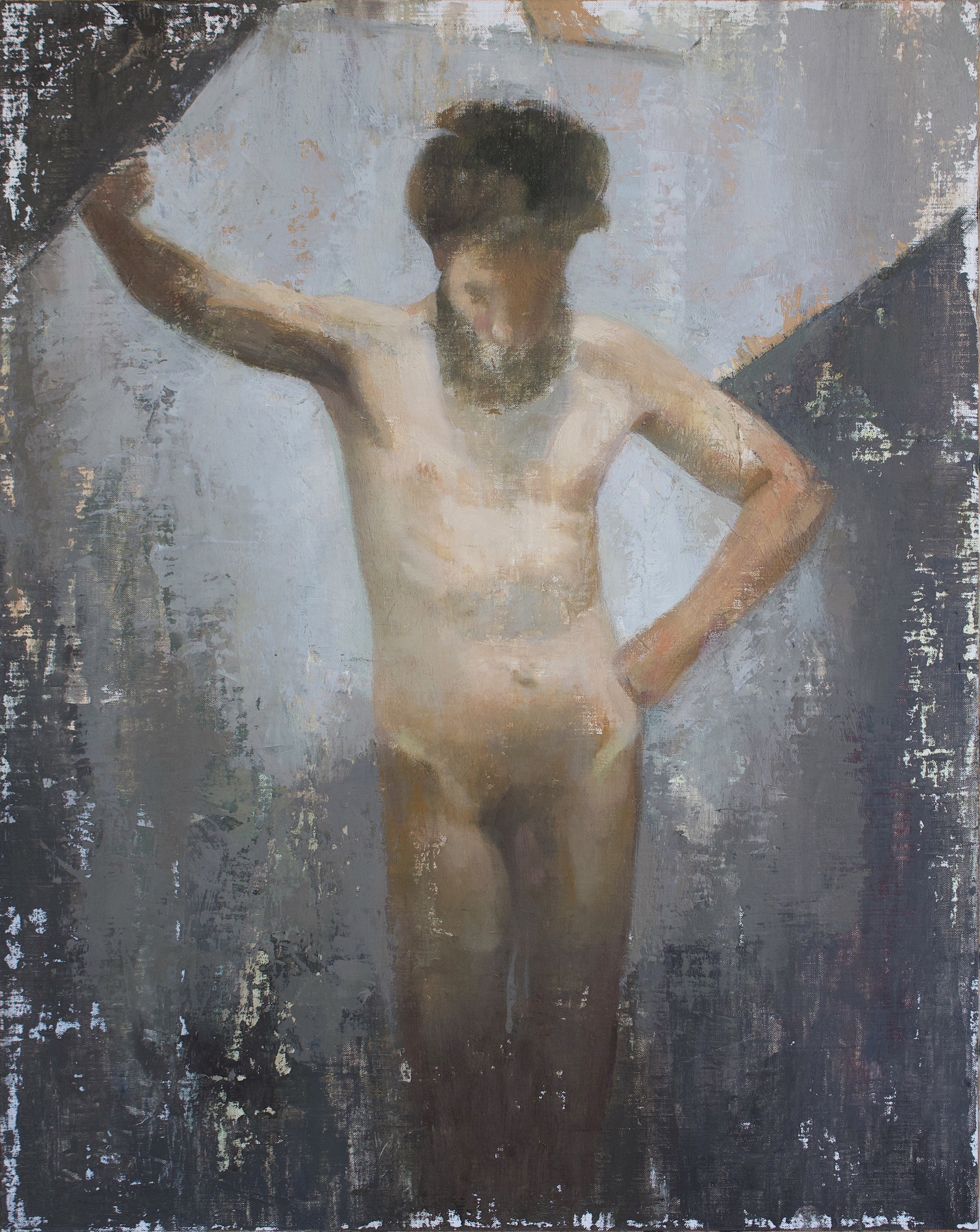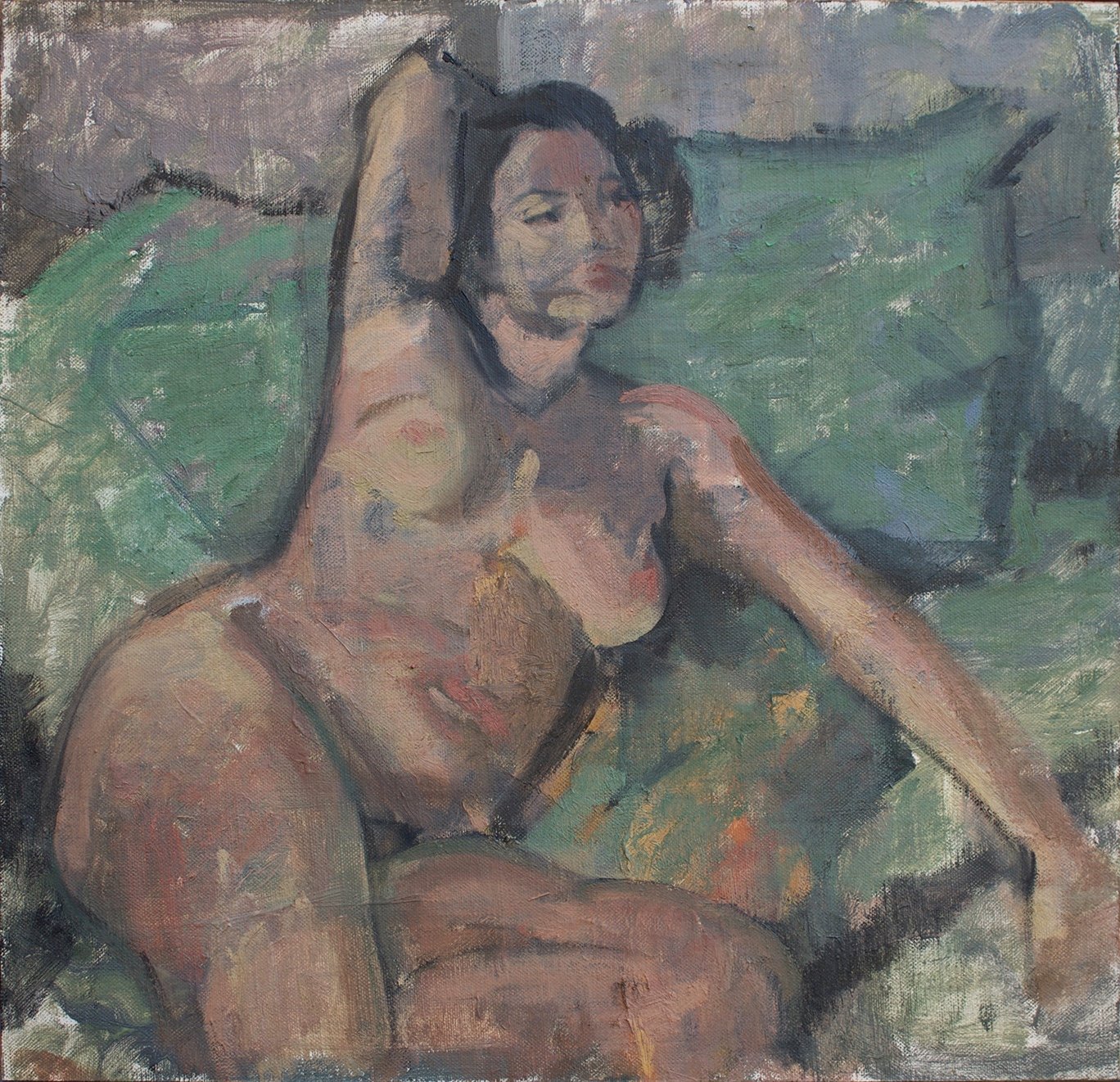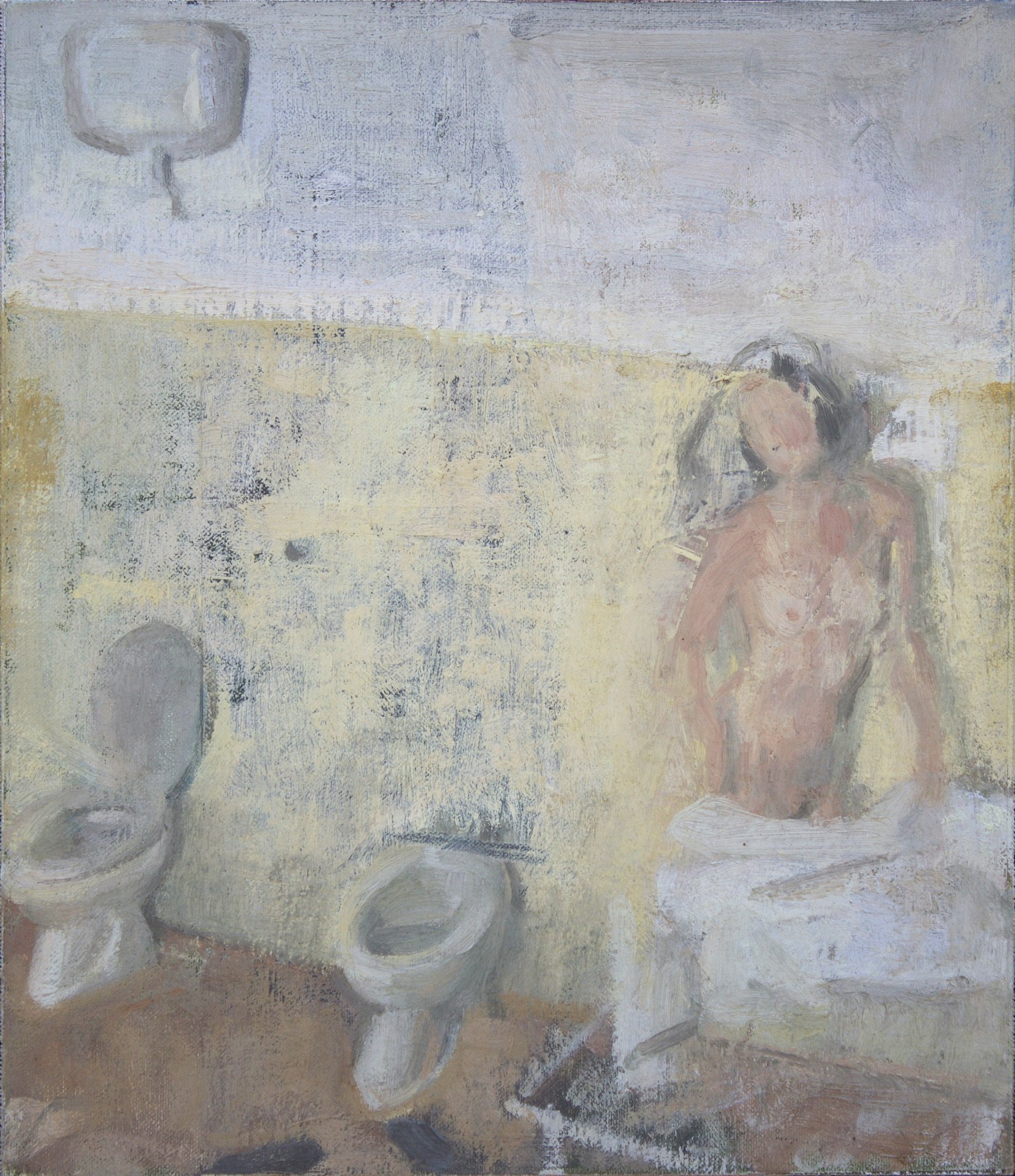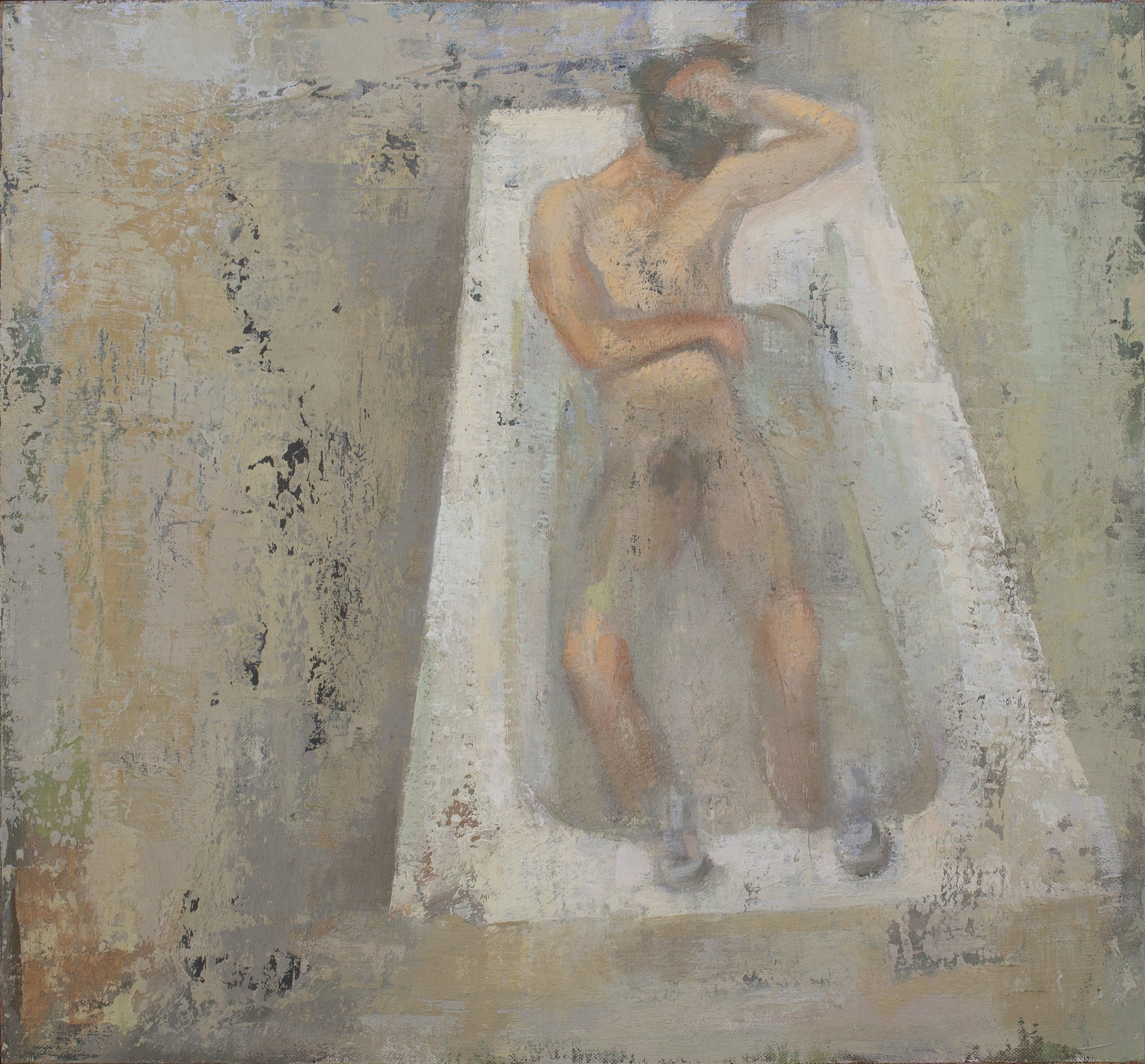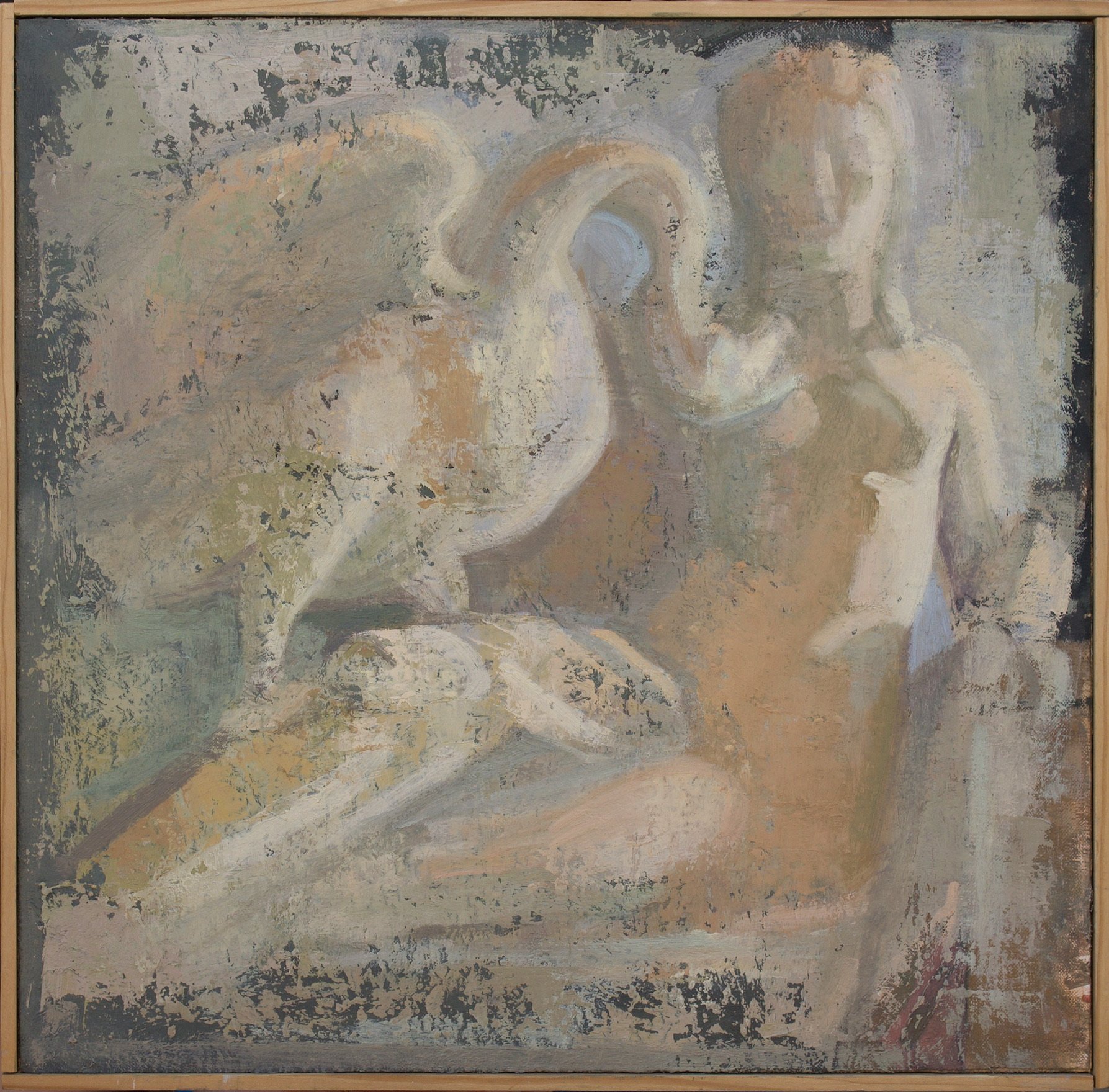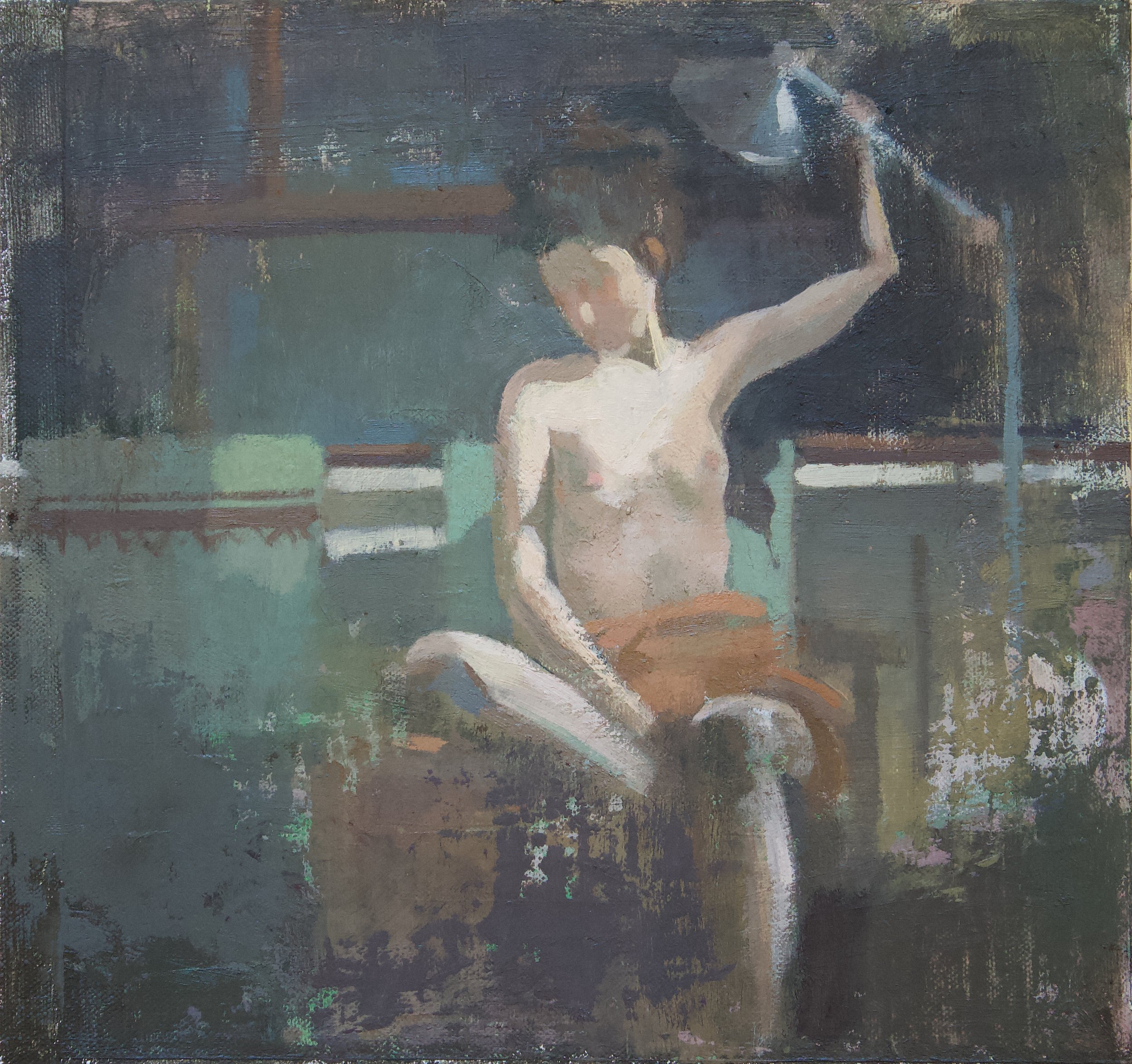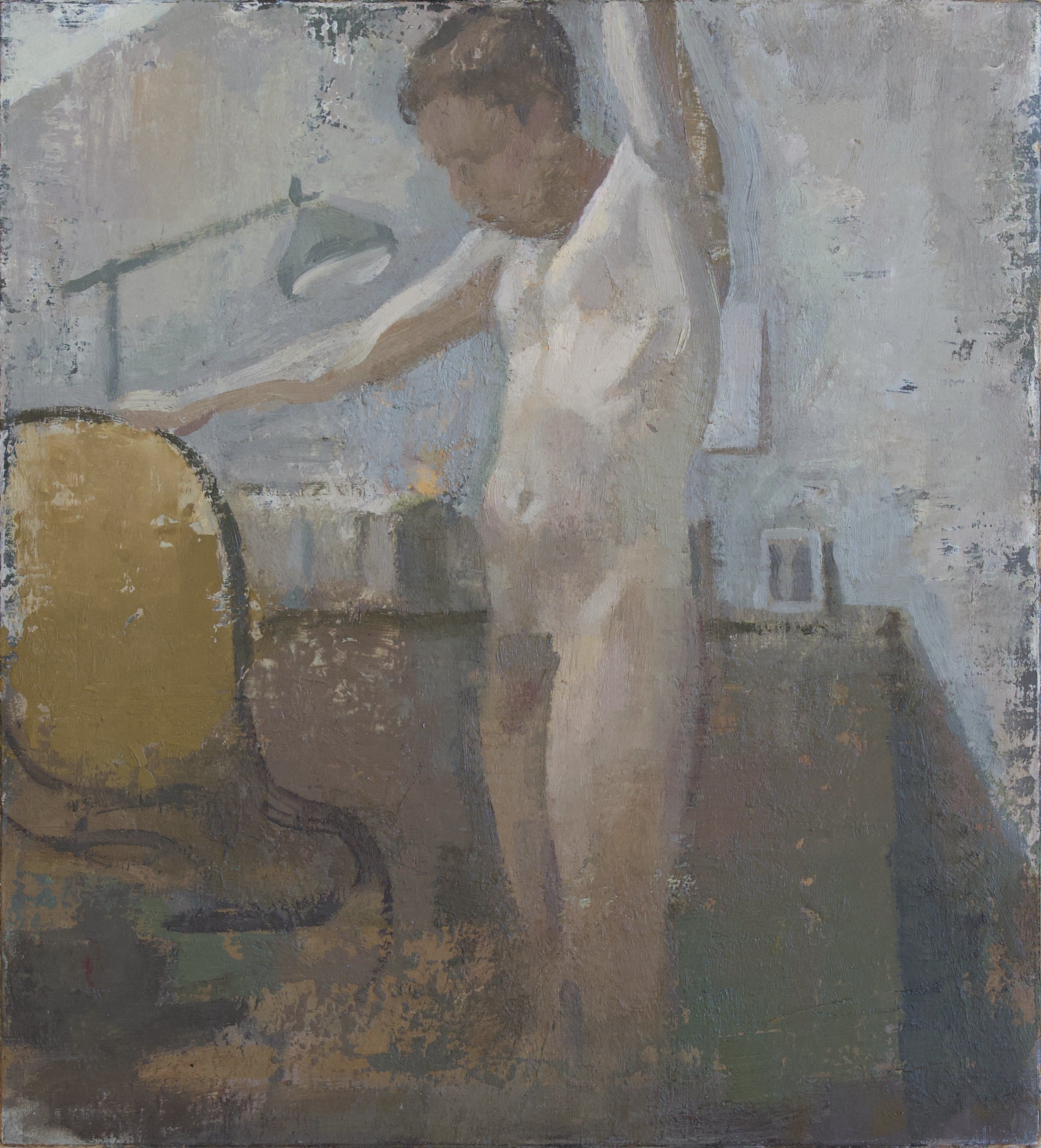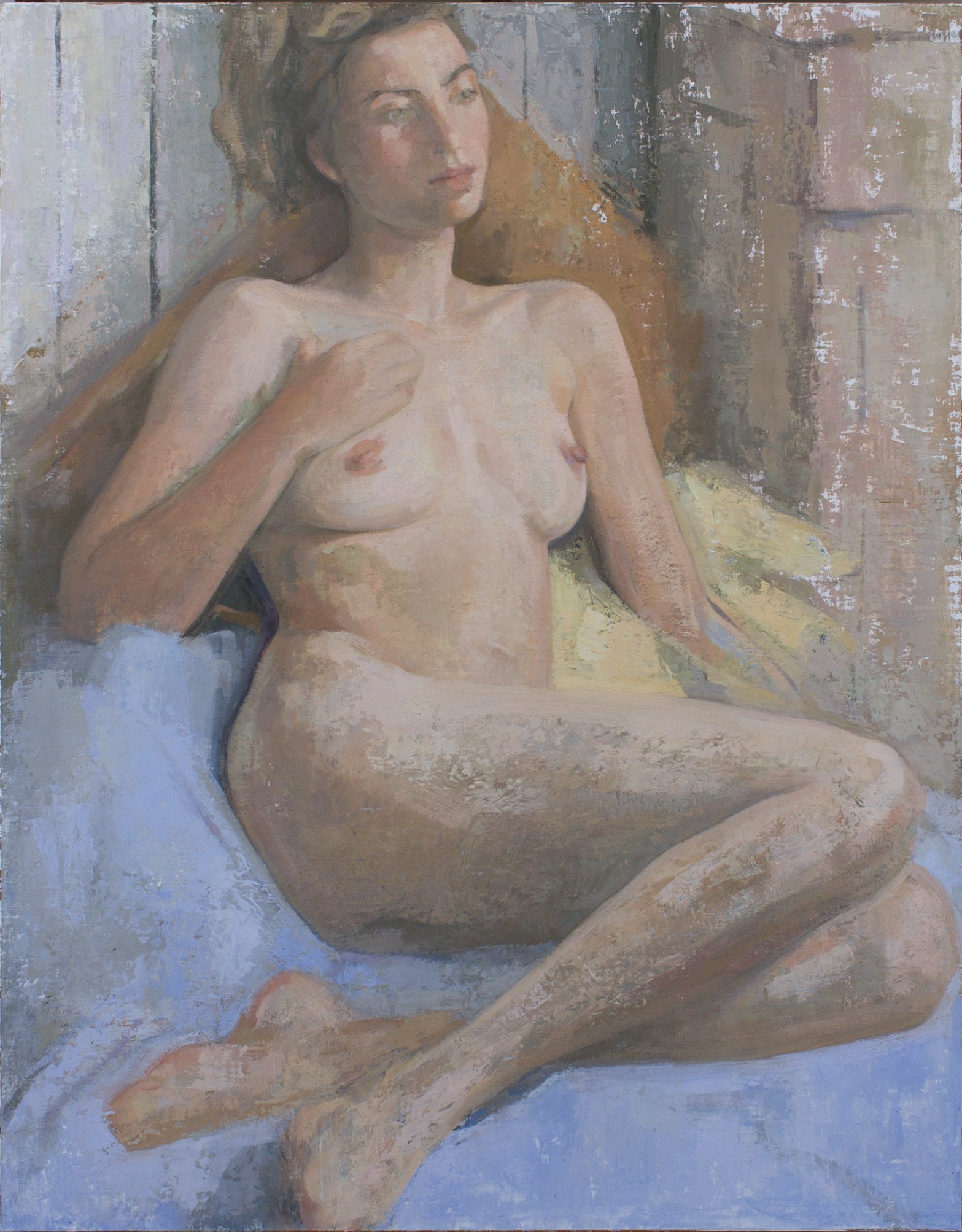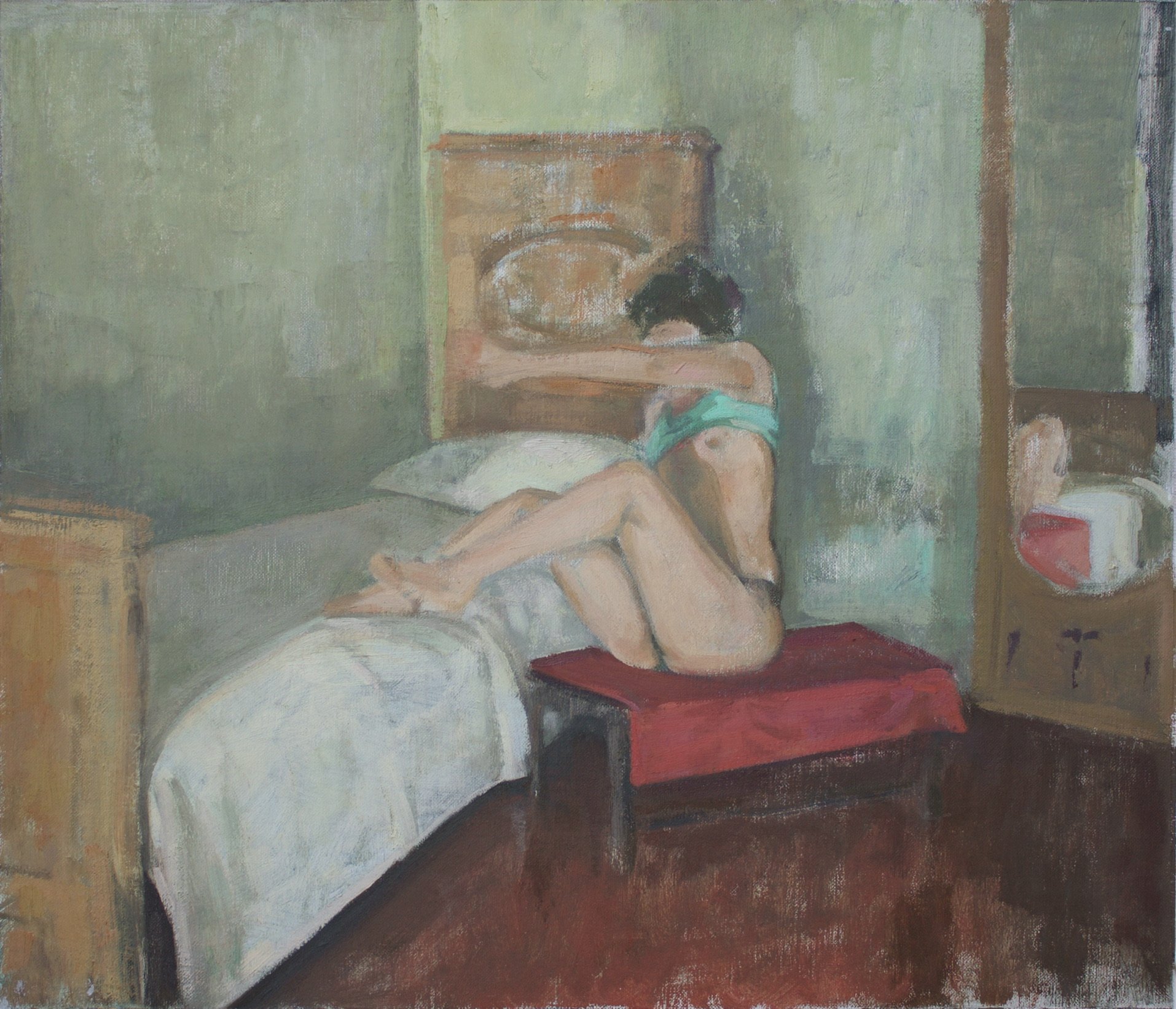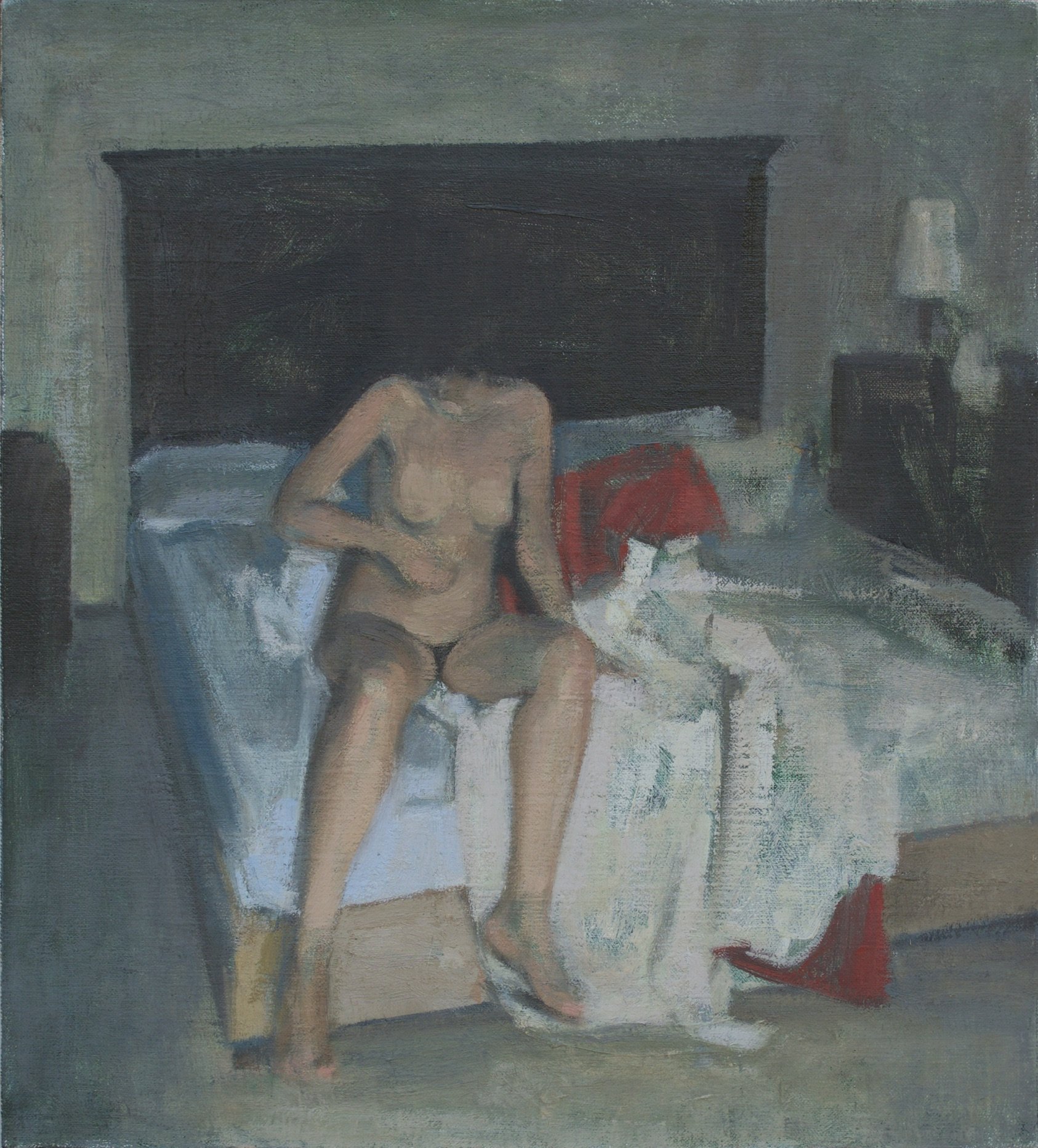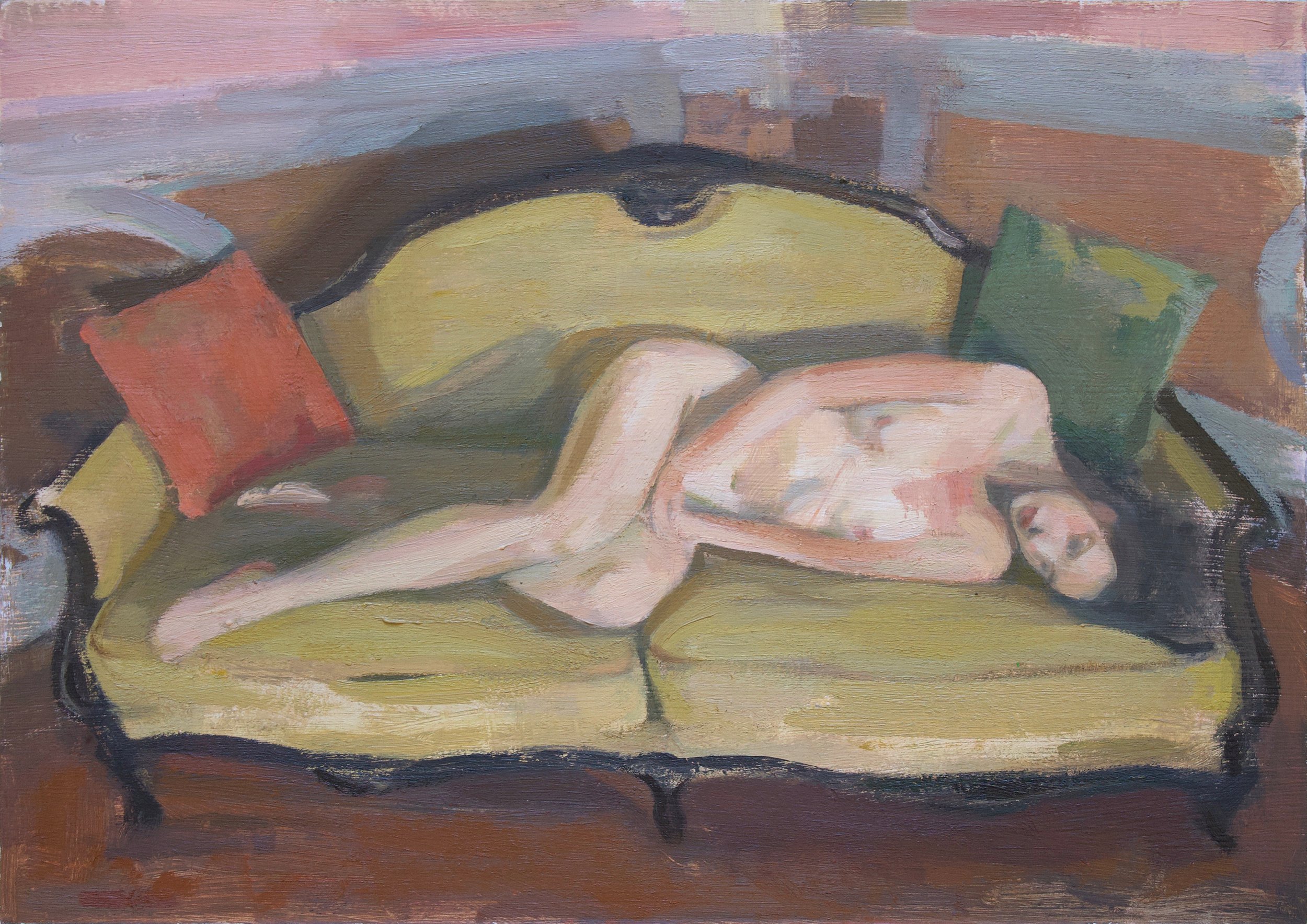
Introducing the work
of
Deborah Sebaoun
“The nude is not the subject of art
but a form of art”
— Lord Clark (1903 -1983)
Kallipygos, 2020, 32 x 26 cm, Oil on canvas mounted on wood panel
Inspired by the Venus Callipige sculpture from the 1st century BC, found in the Domus Nero aurea of Rome. Almost certainly a copy of an earlier work from the Hellenistic period.
This small work Kallipygos was the first painting that I bought from Deborah Sebaoun back in 2020 from her much-acclaimed show Smiles from Reason at the Rothschild Gallery in Tel Aviv. I was delighted to add this to other works from the region by artists including Roni Taharlev, Avital Burg, Yusof Yusifov, Etti Chechover and Yonat Cintra that have found their way to my Wiltshire walls.
Deborah was born in Marseilles, raised in Brooklyn and eventually found herself enrolled on the full-time master class at Jerusalem Studio School where she studied under the tutelage of Israel Hershberg. Today she is a director of the school. For those who are less familiar with the art school, quite simply think The Slade when their drawing studio was the intellect and soul for so many of our own significant 20th/21st century artists.
In conversation on WhatsApp, Deborah writes:
“My technique is direct painting. I mount canvas on wood and then prime with gesso. I then lay an imprimatur and paint the motif directly without preliminary drawings on the surface. We have the advantage of pulling influences from the past through the lens of the material. My paintings are not merely painted with oils, they are also about oils. I do not use any medium and allow for the viewer to trace the texture and movement of the bristles.
My influences range in period and in temperament; they are as much the subject of the work as the model.
Regarding the fractured nudes, I set up a model at night with a spotlight and looked through a camera obscura. I wanted to observe nature in a distilled way.
I was thinking of a writing by Bernard Berenson: “So unnecessary do I find facial expression, and indeed, at times so disturbing, that if a great statue happens to be without a head, I seldom miss it; for the forms and the action, if both be adequate, are expressive enough to enable me to complete the figure in the sense that they indicate;”
Even when I don’t play with the effects of the camera obscura, I distil the subject. My primary consideration is the relationship of the colour of the subject to its environment. Whether to highlight the contrast or to emphasize the harmony is my first objective. What I resolve to do is not predetermined but discovered in the process.”


